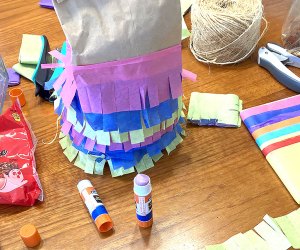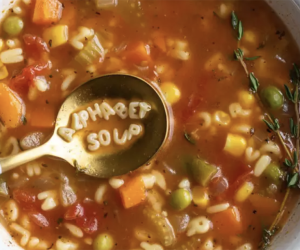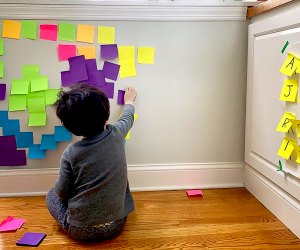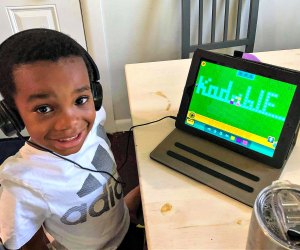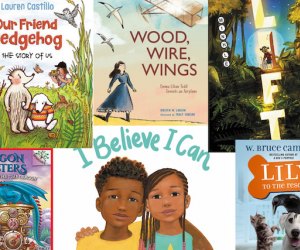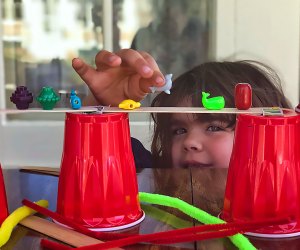Should Kids Learn Cursive Writing? And Teaching How To Write in Cursive
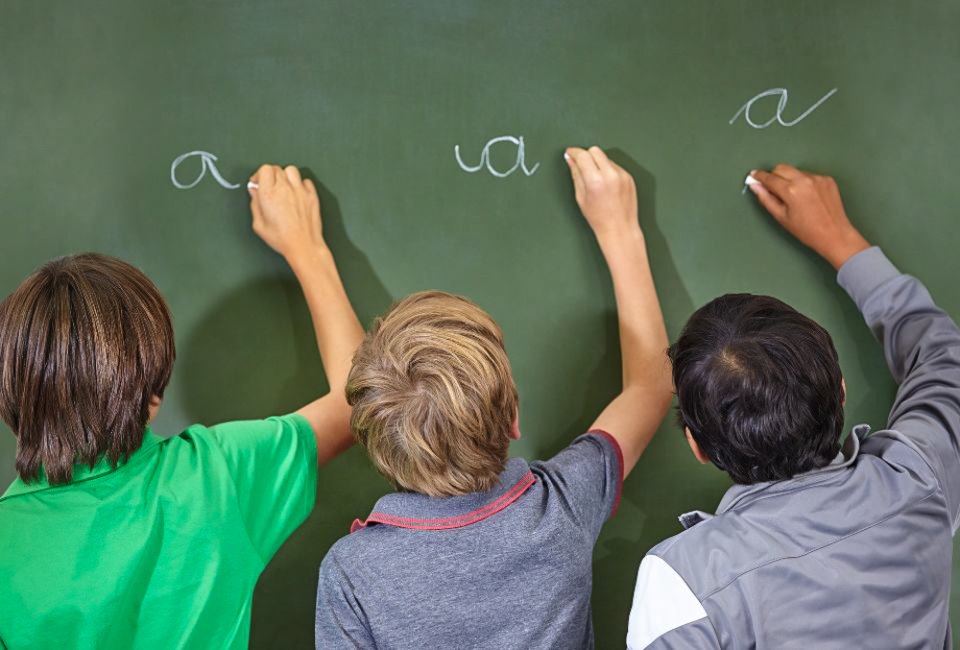
Here's a question we would have never thought to ask 25 years ago: Should kids learn cursive writing?
In a world that increasingly relies on technology, there's no question that kids can—and should—learn to type on a keyboard. But after some internal debate among the Mommy Poppins team, we wanted to know: Do parents still want their kids to learn how to write in cursive?
The answer to our highly scientific social media poll is an overwhelming yes! About 90% of parents responding said they do think kids should learn cursive writing. About 8% didn't care, and only 2% didn't think it was necessary anymore.
Here's what our readers said about why they think cursive writing should still be taught in schools, as well as some tips on teaching kids how to write in cursive. Stay on top of other hot parenting topics with our Mommy Poppins Parenting Guide, which includes everything from types of parenting styles to parenting tips from dads.
OUR LATEST VIDEOS
Current School Policies About Cursive Writing
According to mycursive.com, 23 states currently require that children be taught cursive writing in school. Two of those states, New Hampshire and California, added the requirement in 2023. We find this surprising, since the recent adoption of Common Core Standards by 46 states requires that keyboarding is taught in schools. With only so many hours in a day, why are more states also adding cursive writing as a requirement?
Parents Weigh In: Why Should Kids Learn Cursive Writing?
1. Kids will need to know how to write in cursive as grown-ups so they can write their signature, and maybe for other tasks as well.
In case you were wondering, a signature does NOT need to be written in cursive to be legally binding. And with electronic signatures becoming more prevalent, not every document will need an ink-to-paper signature in the future.
However, many adults say they'd feel silly printing their name on a legal document. Some parents commented that cursive looks more professional, while other think it's faster and more fluid for writing notes in a hurry. On the less practical side, most parents agree that it's also prettier than printing.
2. It's important to be able to read cursive.
Aside from being able to write in cursive, many adults have observed that kids have a hard time reading cursive. Many historical and legal documents are written in cursive, and it's practical to be able to read them as they were initially written. Some fonts even resemble cursive, so the ability to read cursive may even be relevant to typewritten documents. Plus, don't kids want to be able to read Grandma's letters or their teacher's handwritten comments on an assignment?
3. Cursive writing is easier than printing, particularly for some people with different abilities.
Being able to write without lifting pen from paper can feel smoother and faster. Some parents pointed out that cursive is easier to read and write for many kids with dyslexia and other language disabilities. It also helps develop different fine motor skills than printing.
4. Kids like learning how to write in cursive.
My daughter is currently learning cursive in her third-grade class, and she loves it. Many other parents commented that their kids are particularly interested in learning how to write in a more grown-up or fancy way. And if kids want to learn something, who are we to stop them?
5. With the increase in artificial intelligence, kids may one day need to learn how to write without a computer or device.
Remember how we used to write essay tests in little blue books filled with lined paper? It was impossible to use ChatGPT or even Google to try to prove you knew something if you didn't actually know it. Some educators are returning to handwritten assessments to prevent copy-and-pasting of passages or outright plagiarism on exams, says a recent article in Education Week.
RELATED: 125 Fun Facts For Kids That Will Blow Their Minds

Readers are overwhelmingly in support of kids learning cursive writing.
Reader Opinions: Why Cursive Writing is Still Important
"[Cursive is] incredibly important for brain development. The continuous movement [of the hand] is important as opposed to the stop and start of standard print. It’s encouraged in dyslexia programs, and many schools start teaching cursive from the beginning."— Hannah H.M.
"My graphoanalyst hubby says it’s essential for personality development." — Joanne R.S.
"[Cursive] looks more professional, and it just looks better on paper than plain print." — Carla A.
"[Kids] should definitely be exposed to [cursive] because it shows up all the time in type fonts. When I was teaching high school, some of the kids couldn’t read cursive because they had never been exposed in elementary."— Lauren G.
"There are so many interesting unknown perks to it. I have a friend that reads and writes more fluidly in cursive than in regular print due to dyslexia. But even for those without certain needs, I feel at the minimum they should be taught how to read [cursive]." — Margaret C.K.
"My son’s previous school for dyslexic kids made it mandatory because kids with language disabilities write more fluently in cursive. My son’s cursive was gorgeous. Now that he’s in a general ed school and doesn’t have to write in cursive, he struggles." — Tara J.
"I find it strange that this is even a [topic]. I can’t imagine a world without cursive. It’s quicker and prettier! I’m so glad my children will still get taught how to write in cursive." —Stevie S.
"I don't care about cursive. I [just] think kids should write more, using paper and pencil. They just use laptops these days." — Patricia S.
"It’s labor-intensive to write in print. [Cursive] should be covered in school." — Shawnda D.
RELATED: Crafts for Kids: 100 Awesome Art Projects

A cursive journal is a great tool for teaching kids how to write in cursive. Photo courtesy of The Literacy Loft
Teach Your Child How to Write in Cursive
If your child's school doesn't teach cursive writing, or you and/or your kids just want some enrichment on learning your best cursive, we've put together some resources to help.
Step 1: Form a Plan
Experts recommend teaching lowercase letters first, and teaching the letters that don't require complicated strokes early on. Try starting with a, c, e, l, and t. Then you can move on to teaching more complicated letters, uppercase letters, and how to connect letters together.
When starting to connect letters, begin with easy and common combinations like ar, ie, and nd. You can find tutorials with more information on how to teach cursive at mycursive.com, Learning Without Tears, and The Literacy Loft.
RELATED: 100 Trivia Questions for Kids - With Answers!

The Write-On Wipe-Off Lets Write in Cursive Board makes learning cursive fun. Photo courtesy of the Highlights Learning store on Amazon
Step 2: Gather Supplies
We like this Highlights Write-On, Wipe-Off Board to reduce paper usage, the Cursive Handwriting Workbook for Kids that progresses from letters to words to sentences, and these Montessori wooden tracing blocks for younger kids who want to get an early start.
If you want to improve your own cursive writing or reinforce lessons for your teen, try this adult-level cursive handwriting workbook. If you want to get creative, you can use these roller stamps to make the three lines you usually see in writing guidebooks on your own white paper at home.
Step 3: Be Consistent
Try to spend a similar amount of time each day or week learning cursive writing. Be sure to set reasonable expectations for your child based on their age and abilities. Remember, while cursive can be fun, not all adults write in cursive on a regular basis. Giving kids the opportunity to learn how to write in a new way is great for their development, motor skills, and education, even if they don't use it every day in the future.
This article contains affiliate links, which means we might earn a small commission if you make a purchase. There is no extra cost to the reader. We only recommend products and services that we have personally used or have thoroughly researched.























































